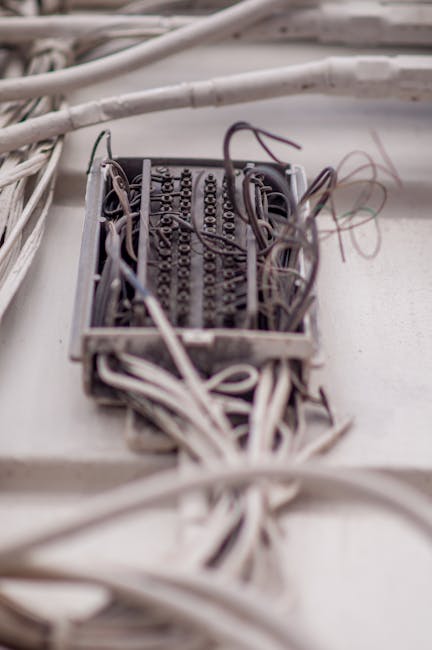Could Your Home’s Wiring Be a Hidden Danger?
Imagine sitting down for family movie night, and suddenly the lights flicker—again. You chalk it
up to an old house quirk, but what if it’s something more serious? For many suburban
homeowners, especially those in houses built before the 1970s, cloth wiring could be the culprit.
It’s not just outdated; it can be downright dangerous.
As an electrician with years of experience inspecting older homes, I’ve seen firsthand how cloth
wiring can turn from a forgotten relic to a homeowner’s worst nightmare. Let’s explore what cloth
wiring is, why it’s risky, and what you can do to protect your home and family.
What is Cloth Wiring?
Cloth wiring, as the name suggests, is electrical wiring insulated with cloth fabric. It was
commonly used between the 1920s and 1970s, back when modern synthetic insulations like
PVC weren’t available. The cloth was sometimes reinforced with materials like rubber for added
durability.
Homes built during this period—especially in suburban neighborhoods—are likely to have this
type of wiring hidden behind their walls. While it was considered state-of-the-art at the time,
decades of wear and tear have revealed its shortcomings.
Why Cloth Wiring is Considered Risky
Aging and Deterioration
Over time, cloth insulation becomes brittle and frayed, exposing the wires underneath. A
homeowner I performed work for had cloth wiring throughout her home and was experiencing
electrical issues all over her house. Once I found the cloth wire, it was so brittle that the wire fell
apart as I touched it. We recommended rewiring the whole home and thankfully we replaced all
the wiring and all of her electrical is up to date and functioning properly.
Fire Hazards
One of the biggest concerns with cloth wiring is its inability to handle the electrical demands of
modern homes. Think about the number of gadgets, appliances, and chargers you use daily.
Cloth wiring wasn’t designed to support such loads, increasing the risk of overheating and short
circuits. I’ve seen charred insulation around cloth wires—a clear sign of a near-miss.
Electrical Safety Concerns
Another major issue is the lack of grounding. Grounding provides a safe path for excess
electricity in case of a fault. Without it, appliances and outlets become shock hazards.
Many cloth wiring systems also lack the structural integrity to integrate safely with today’s electrical
devices.
Signs Your Home May Have Cloth Wiring
How can you tell if your home has cloth wiring? Here are some common signs:
● Flickering Lights or Frequent Breaker Trips: These could indicate overloaded circuits
or deteriorating wires.
● Burning Smells or Discolored Outlets: These are often signs of overheating wires.
● Visual Clues: If you open an outlet or panel and see fabric-like material around the
wires, you likely have cloth wiring.
● Inspection Tips: If you’re unsure, a licensed electrician can help identify the type of
wiring in your home.
Real-Life Consequences of Ignoring Cloth Wiring
Insurance Denials
Home insurance companies often refuse coverage for homes with outdated wiring. Even if they
do cover you, claims related to cloth wiring issues can be denied. I’ve seen cases where
homeowners were left paying the bill for thousands of dollars in damages.
What Homeowners Should Do About Cloth Wiring
Inspection and Assessment
The first step is to schedule a professional inspection. Electricians use tools like infrared
cameras and voltage testers to evaluate wiring conditions without tearing open walls. It’s a small
investment for peace of mind.
Replacement Options
Modern wiring materials, such as copper with PVC insulation, are far safer and more durable.
Replacing cloth wiring might sound like a daunting project, but it’s a long-term solution that pays
off in safety and energy efficiency. Depending on the size of your home, rewiring costs can
range from $5,000 to $50,000.
Conclusion
Cloth wiring may have been the norm decades ago, but it’s no match for today’s electrical
demands. Ignoring it can put your home, family, and finances at risk. By taking proactive
steps—whether through inspections, replacements, or temporary measures—you can ensure
your home stays safe and functional.
Headquartered in Fort Lauderdale Superior Electric and Air offers a comprehensive range of services, including HVAC system installations, air conditioning repairs, emergency electrical work, and energy-efficient upgrades. By combining state-of-the-art equipment with a team of certified technicians, the company ensures that every project is completed to the highest industry standards.

